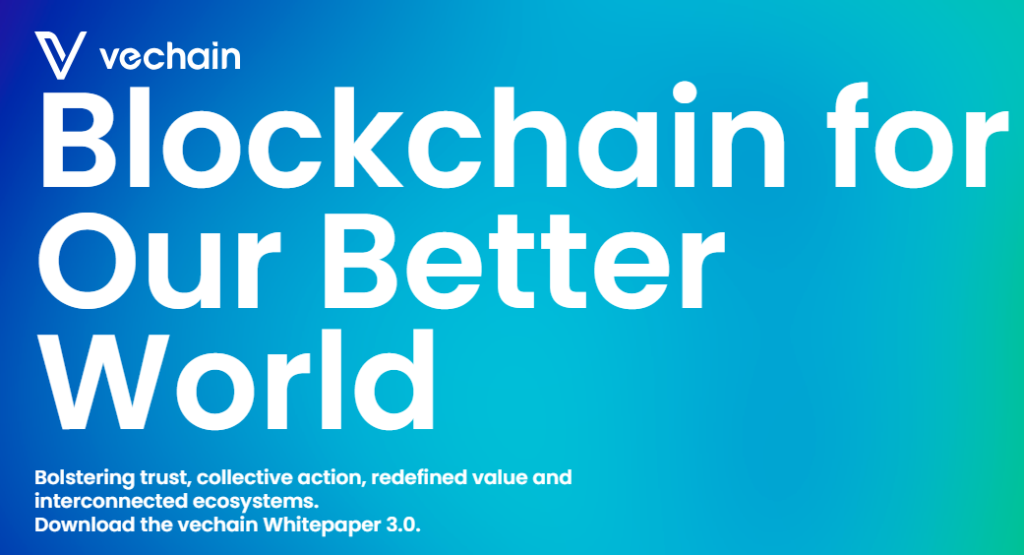Table of Contents
Consensus mechanisms in the blockchain space are continuously evolving. Other consensus mechanisms emerged after the original proof-of-work (PoW) and proof-of-stake (PoS) consensus mechanisms were developed.
One such consensus mechanism gaining traction is the Proof of Authority (PoA) consensus, which has been viewed as a more energy-efficient alternative to the Proof of Stake mechanism as fewer computing resources are needed.
In Proof of Authority, machines can generate new blocks by passing a strict vetting process. As a result, trustworthy validation machines protect Proof of Authority blockchains. These system moderators are pre-registered participants who check and validate blocks and transactions.
The Proof of Authority mechanism is scalable because it is based on a small number of block validators. One popular crypto project using this mechanism is VeChain (VET).
Let’s explore how the Proof of Authority consensus mechanism works to enhance blockchain functionalities.
How Proof of Authority Works
Preselected validators use software to organize transactions into blocks. The process is automated using smart contracts, so the validators don’t need to watch their screens 24/7. However, as a validator, you must ensure your computer is in good working condition.
Terms for Proof of Authority Consensus Mechanism
Although conditions differ from one blockchain to another, to be chosen as a validator in any blockchain using Proof of Authority, you must meet these three basic requirements:
- As a validator, you must be trustworthy, have good moral standards, and have no criminal record.
- Your identity must be validated on the blockchain network, with the ability to cross-check the information in a public database. Therefore, your real identity must be confirmed.
- As a validator, you must be willing to invest money and put your reputation at stake. The rigorous selection process reduces the possibility of choosing validators with questionable records and encourages a long-term commitment to your duty as a validator.
The essence of a strong reputation is to create trust in your identity as a validator. The selection process is complex and ensures that only high-quality candidates qualify.
This guarantees that all validators adhere to the same procedures and rules, ensuring the system’s integrity and reliability.
For example,let’s consider a reputational rating system within eBay (EBAY).
In the beginning, every seller is subjugated to the rules of the platform and feedback from the customers.
If a seller has a 100% feedback score, he earns the buyers’ trust, which indirectly boosts the credibility of eBay products.
Similarly, a seller with low feedback ratings will lack buyers’ trust. Sellers receiving low positive feedback scores are filtered from eBay, leaving reputable sellers with high positive feedback to continue selling on the store.
Just as reputation is essential on eBay, reputation for verifying and validating is also necessary in Proof of Authority.
When you receive the right to become a validator due to the PoA algorithm, you automatically have an incentive to keep your ratings high. You are motivated to maintain a stable transaction process to avoid tarnishing your reputation, which is tied to your real-life identity.
As a result, most users value their hard-won role as a validator.
Crypto Project That Uses Proof of Authority Consensus Mechanism
Vechain

VeChain’s proof-of-authority process starts with a list of 101 so-called authority master node operators selected and audited by VeChain’s central steering committee. The committee itself is elected by the VeChain community.
Each master node operator must pass a rigorous verification and auditing process involving accounting services giants PricewaterhouseCoopers and DNV. The operator must also contribute to VeChain’s growth as an active developer, a well-known opinion leader, or a company with interests in cryptocurrency.
The master node operator is not a specific computer. Each operator may run several nodes under the same identity to boost the redundancy and capacity of the validation network.
New blocks are added to VeChain’s blockchain ledger by pushing new data to the master nodes and waiting for most sample nodes to validate and approve the new block.
The small group of selected master nodes can reach consensus quickly, and new blocks are generated approximately every 10 seconds.
Other PoA networks are run along similar lines, although each has its quirks.
Proof of Authority and Proof of Stake consensus mechanisms offer similar advantages and disadvantages. Moreover, so far in blockchain’s history, no developer or project has yet to create a consensus mechanism immune to issues or objections.
The Proof of Authority consensus mechanism reduces the energy needed to run the blockchain network and makes validation easier.
On the other hand, staking in the Proof of Stake consensus mechanism facilitates decentralization by allowing people from any group to participate in the network security. The PoS algorithm requires no computational tasks to create new blocks. Therefore, the validators don’t require specialized, high-end hardware to maintain the network.
However, three pieces of software, including an execution client, a consensus client, and a validator, are needed to participate in the PoS staking process.
The Proof of Authority algorithm accelerates the speed at which the authorities validate transactions. As a result, Proof of Authority blockchains are faster in processing transactions than Proof of work or Proof of stake because the predictable generation of new blocks depends on the number of validators.
Additionally, the Proof of Authority network is more resistant to cyber attacks than both the Proof of Work and Proof of Stake consensus because even if you alone manage to create 51% of the processing power needed for the network to run, you still cannot compromise the network.
Unfortunately, an individual or group of hackers may be able to attack or shut down the Proof of Stake network if they can obtain enough coins (about 51% of the total stake).
So, is Proof of Stake less secure?
The answer is that to protect the blockchain’s security and integrity, almost every blockchain uses some techniques that discourage hackers’ malicious actions.
For instance, to prevent 51% of attacks, many Proof of stake networks employ slashing, which is also kind of a problem with Proof of stake.
Slashing cuts a portion of a validator’s stake in case there’s any malicious action from the validator. This is to discourage actions that can endanger the blockchain’s security.
Nonetheless, slashing is a problem as it still occurs in cases where a validator unintentionally does something that is interpreted negatively. So, is Proof of Authority better than Proof of stake?
While Proof of Stake has security flaws and Proof of work consumes a lot of power, Proof of Authority is an ideal option for security and energy usage.
However, because Proof of Authority is a more centralized strategy for upholding consensus on a blockchain network, it targets businesses or private groups that aim to use private networks.
The main advantage of PoA over Proof of work blockchains is the far lower need for computing power.
Much like PoS setups, a PoA blockchain works with a fraction of a Proof of Work network’s computing hardware, electric power, and environmental impact.
On top of these fundamental benefits, Proof of Authority coins also bring the same central authority qualities to this comparison. If you’re uncomfortable with a blockchain network with a tightly defined (and often hand-picked) data validation group, a PoA solution may not be for you.
On the other hand, it can be an excellent choice for internal blockchain solutions in an enterprise network setting and different situations where the process doesn’t need to be globally decentralized.
Add a youtube video about advantages vs inconvenients
Advantages of Proof of Authority
- More transactions per second can be executed.
- Less computational resources are needed.
Disadvantages of Proof of Authority
- Validators are pre-approved, making it less decentralized than other blockchain mechanisms.
- Immutability concerns: PoA raises questions about immutability because censorship and blacklisting are possible.
- Validator identity: Everyone knows the identity of validators, which could be exploited by malicious actors.

